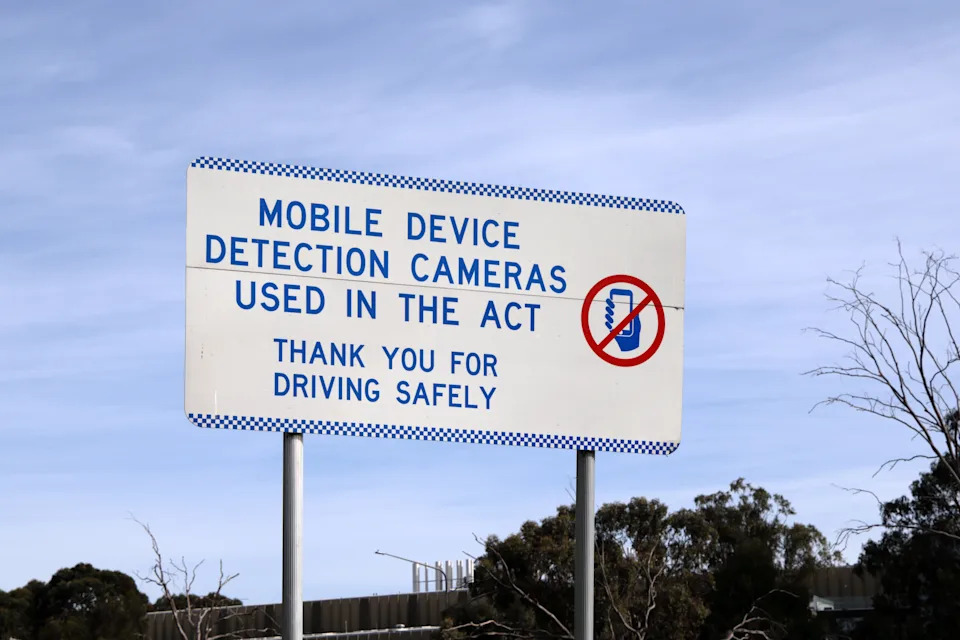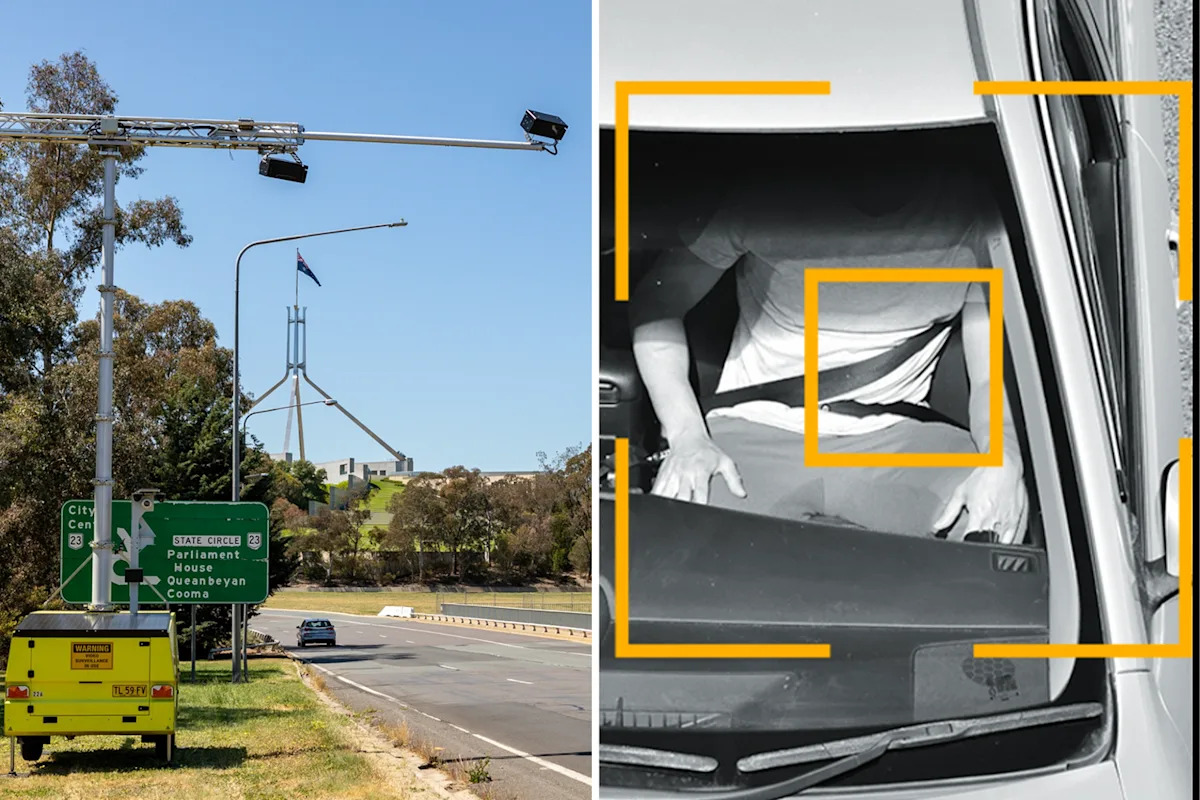A prominent Australian lawyer says drivers who don’t wear their seatbelts properly will soon be in for a big “shock” ahead of a major change on the roads in the nation’s capital.
Hayder Shkara said he still sees large numbers of seatbelt offences, decades after they were introduced and despite the belts being one of the most effective ways to stay safe in a crash.
He’s warning motorists that fines will apply and penalties will be enforced as the ACT upgrades mobile phone detection cameras to detect seatbelt offences by both drivers and their passengers from November 3.
“We still see seatbelt offences happening all the time,” Shkara told Yahoo News. “These new cameras will definitely mean that people will receive a shock when they realise that they have not been wearing their seatbelts correctly.”

The government said the changes form part of its ongoing effort to cut the number of deaths and serious injuries on the roads. Source: Getty
Shkara said sometimes drivers may not even be aware they’re wearing seatbelts incorrectly. “People find [that] extremely unfair, so you need to watch out and maybe do a quick refresher on how to wear a seat belt properly,” Shkara, director at the Collective Family Law Group, said.
Fines of $574 apply for failing to wear a seatbelt properly fastened, with both drivers and their passengers under the microscope in the ACT.
Government defends added surveillance
The move follows the Legislative Assembly’s unanimous approval of the Road Transport (Safety and Traffic Management) Amendment Bill 2025 last month, which broadens the range of offences the territory’s cameras can detect. The government said the changes form part of its ongoing effort to cut the number of deaths and serious injuries on the roads.
“Seatbelts save lives,” declared ACT minister ACT Attorney-General Tara Cheyne last month.
Cheyne said the move is not only about holding those behaving dangerously on roads accountable, but increasing awareness. An ACT government spokesperson previously told Yahoo News the mobile traffic detection network now includes three portable cameras and two fixed units.
“All Mobile Traffic Detection Devices will be expanded to target drivers and passengers not wearing seatbelts, or not wearing them correctly,” they said.
An online explanatory statement clarified that people with a medical exemption from wearing a seatbelt — whether correctly or at all — who are detected by a camera while travelling in a rideshare vehicle can provide their medical information directly to Access Canberra, rather than to the rideshare driver.
Once enforcement of seatbelt offences begins, the cameras will operate in the same way as those detecting speeding, mobile phone use and registration breaches.
“If multiple offences take place at the same time, for example, a mobile device and a seatbelt offence, both can be captured in one event and the images can be used to issue multiple infringements,” Cheyne said. “This is already a possibility through police enforcement.”
How should a seatbelt be worn?
A seatbelt is deemed “properly adjusted and fastened” if the clasp is buckled, the lap belt sits low and firmly on a person’s hips, and the sash sits over a person’s shoulder.
Road safety experts say cameras act as both a deterrent and an enforcement mechanism, targeting behaviours that are otherwise difficult for police to spot in real time.
The use of artificial intelligence has also allowed the technology to scan for multiple offences at once, from seatbelts to speeding.

According to NSW Transport, there a seatbelt must be on firm and flat with no slack. Source: NSW Transport
Do you have a story tip? Email: newsroomau@yahoonews.com.
You can also follow us on Facebook, Instagram, TikTok, Twitter and YouTube.


